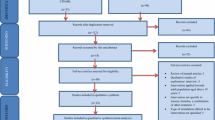Abstract
Objectives: A literature report described significantly raised vibration threshold within the territory of the median nerve in a group of office workers and concluded that the results indicated a change in the function of large sensory fibres. The aim of the present cross-sectional study was to compare vibrotactile perception thresholds and nerve conduction measurements in the upper extremity between female computer users (secretaries) and female non-users (nurses). Methods: Eighty-two secretaries, aged 25–65 (median 44) years and 35 nurses, aged 24–57 (median 46) years went through nerve conduction measurements on the dominant hand and also a vibration threshold test with readings over the hand at five sites which tested cutaneous innervation of the median, ulnar, and radial nerves. Results: There was no significant difference in any parameter of the nerve conduction testing and there was no significant difference in any parameter of the vibration threshold test between secretaries and nurses. The numerical differences between groups were small and in both directions and thus do not indicate a power problem. Conclusions: We saw no signs of early neural deficits of large sensory fibres in subjects who intensively use computer keyboard equipment.
Similar content being viewed by others
Notes
Details of the two occupational groups can be obtained by contacting the first author.
References
Ashworth NL, Marshall SC, Sautkunam LE (1998) The effect of temperature on nerve conduction parameters in carpal tunnel syndrome. Muscle Nerve 21:1089–1091
Ellemann K, Nielsen KD, Poulsgaard L, Smith T (1999) Vibrotactilometry as a diagnostic tool in ulnar nerve entrapment at the elbow. Scand J Plast Reconstr Hand Surg 33:93–97
Goldberg JM, Lindblom U (1979) Standardised methods of determining vibratory perception thresholds for diagnosis and screening in neurological investigations. J Neurol Neurosurg Psychiatry 42:793–803
Greening J, Lynn B (1998) Vibration sense in the upper limb in patients with repetitive strain injury and a group of at-risk office worker. Int Arch Occup Environ Health 71:29–34
Halar EM, Delisa JA, Soine TL (1983) Nerve conduction studies in upper extremities: skin temperature corrections. Arch Phys Med Rehabil 64:412–416
Jensen BR, Pilegaard M, Momsen A (2002) Vibrotactile sense and mechanical functional state of the arm and hand among computer users compared with a control group. Int Arch Occup Environ Health 75:332–340
Murata K, Araki S, Okajima F, Saito Y (1996) Subclinical impairment in the median nerve across the carpal tunnel among female VDT operators. Int Arch Occup Environ Health 68:75–79
Sandén H, Edblom M, Hagberg M, Wallin BG (2005) Bicycle ergometer test to obtain adequate skin temperature when measuring nerve conduction velocity. Clin Neurophysiol 116:25–27
Acknowledgements
This work was supported by the Swedish council for working life and social report.
Author information
Authors and Affiliations
Corresponding author
Rights and permissions
About this article
Cite this article
Sandén, H., Edblom, M., Ekman, A. et al. Normal nerve conduction velocity and vibrotactile perception thresholds in computer users. Int Arch Occup Environ Health 78, 239–242 (2005). https://doi.org/10.1007/s00420-005-0606-x
Received:
Accepted:
Published:
Issue Date:
DOI: https://doi.org/10.1007/s00420-005-0606-x




